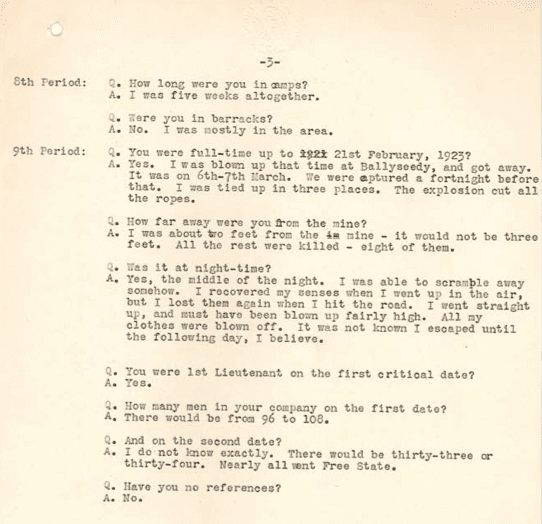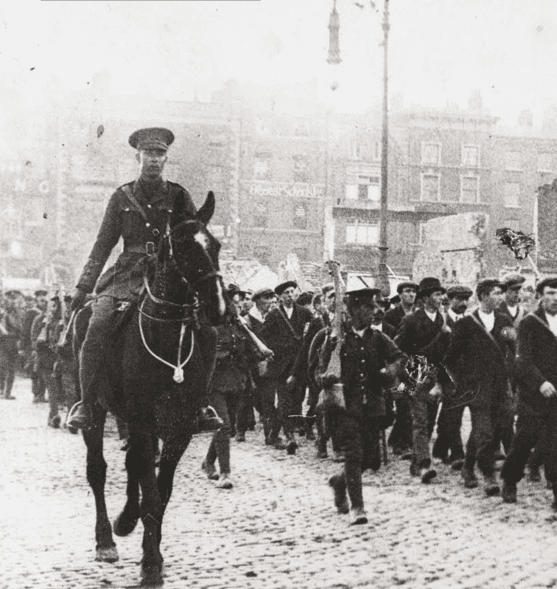By Charley S. Binkow
THE NEW ARCHIVE (No.1)
Computer and online technologies are enabling historians to do history in a variety of new ways. Archives and libraries all over the world are digitizing their collections, making their documents available to anyone with a computer. Mapping and other kinds of visualization are allowing historians to create new kinds of documents and ask new questions about history. Each week, our Assistant Editors, UT History PhD student Henry Wiencek and Undergraduate Editorial Intern Charley Binkow, will introduce our readers to the world’s most interesting new digital documents and projects in THE NEW ARCHIVE.
Almost one hundred years after the 1916 Irish Easter Rebellion, the Defense Forces of Ireland have compiled and uploaded a comprehensive, extensive digital archive of the insurrection. The collection, which includes over 300,000 files, details a wide array of primary documents from the Easter Rising and subsequent Irish War for Independence. The collection includes some very detailed maps (including handwritten notes from military personnel) and impressively preserved photographs, but the most fascinating documents are the hundreds of personal letters and pension requests. These pensions requests add a chilling personality to the archives for they include recommendation letters, transcripts, and handwritten notes detailing some of the most brutal aspects of the war. One transcript shows the interview of Stephen Fuller, the lone survivor of the “Ballyseedy Massacre.” The account is fascinating, intimate, and well worth reading.

Extract from typed transcript of sworn evidence given by Stephen Fuller on 29 October, 1935, before the Advisory Committee, Military Service Pensions Act, 1934. Stephen Fuller was the only survivor of the ‘Ballyseedy Massacre’ 7 March, 1923 in IRA prisoners were killed by a mine while in the custody of National Army forces in county Kerry during the civil war.
The archive does a very good job of labeling their documents too. Each document is accompanied by a small, yet thorough description of the source and helps give the researcher context. Even readers unfamiliar with the Easter Rebellion can still appreciate the artifacts. On top of the short blurbs, the archive has extensive Academic Advisory Committee Essays, which offer professional opinions on how to internalize the texts. These essays are in depth and analytical, but written for a popular audience. And lastly, the collection offers a guide for historians that specifies the significance of certain artifacts (for example, the distinctions between different medals and pensions). Overall, this archive, which is continually expanding, is well worth perusing.
Explore the Collection:
A full guide to the collection (PDF), where Academic Advisory Committee essays can be found.
A video guide to the collection
An alphabetical list of all participants in the 1916 Rising
Photo Credits:
Irish prisoners being escorted to the North Wall, 1916 (Image courtesy of Defense Forces Ireland, Reference: EW31)
Extract from typed transcript of sworn evidence given by Stephen Fuller on 29 October, 1935, before the Advisory Committee, Military Service Pensions Act, 1934. Stephen Fuller was the only survivor of the ‘Ballyseedy Massacre’ 7 March, 1923 in IRA prisoners were killed by a mine while in the custody of National Army forces in county Kerry during the civil war. (Image courtesy of Defense Forces Ireland, Reference: IE/MA/MSPC/MSP34REF6759)
